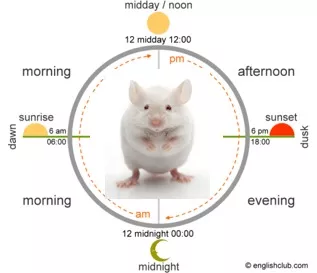
The Proteomic Landscape of the Suprachiasmatic Nucleus Clock Reveals Large-Scale Coordination of Key Biological Processes
Do you know what time it is? I have no idea either, but proteins in the Cheng Lab can tell you the time every 8, 12 and 24 hours! Recent MSc graduate Neel Mehta, NSERC USRA/BIO481 Abhilasha Patel and former PDF Peng Zhang (Cheng Lab) collaborated with scientists at U Ottawa in their recent paper “The Proteomic Landscape of the Suprachiasmatic Nucleus Clock Reveals Large-Scale Coordination of Key Biological Processes” in PLoS Genetics. Using quantitative mass spectrometry, they interrogated the proteome of the mouse Suprachiasmatic Nucleus (SCN - the central pacemaker that generates 24h rhythms) across the day-night cycle. They found that the expression of many proteins in the SCN is time-of-day-dependent but not necessarily circadian (i.e. they don’t show 24h rhythms). In fact, many proteins exhibited abrupt fluctuations at dawn and dusk, and a larger-than-expected population of proteins that had 8h or 12h (ultradian) rhythms. Another key finding was that transcript and protein abundance were poorly correlated, indicating that post-transcriptional mechanisms (e.g. microRNAs) play a dominant role in determining protein expression in the SCN. Finally, the data show that proteins that function within common biological processes tend to exhibit similar expression patterns throughout the day/night, suggesting coordinated expression. In summary, this study underscores the significance of post-transcriptional regulation, the surprising prevalence of ultradian protein expression, and the functional implications on
mitochondrial energy metabolism within the SCN.
Congratulations on these transformative breakthroughs!
